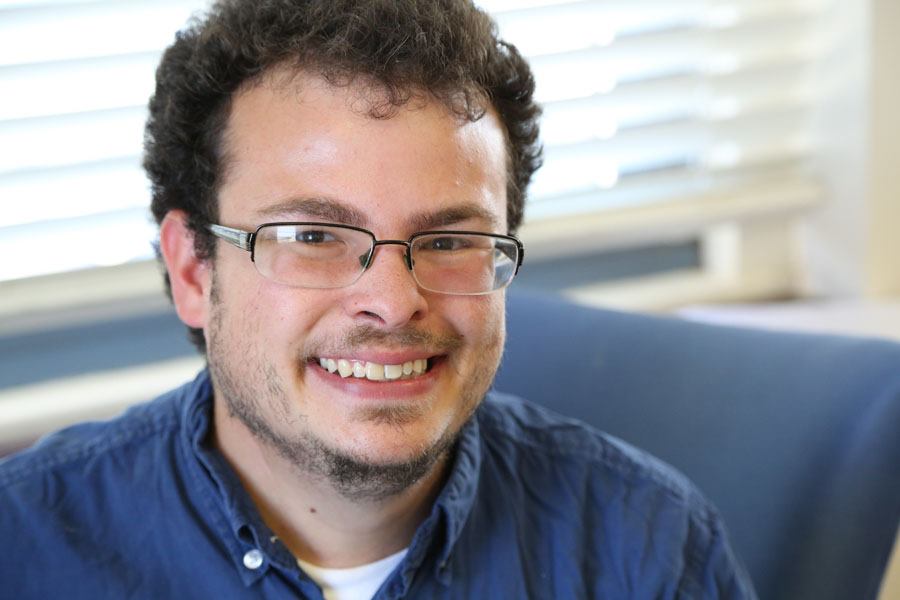The ADA and Me
By Jason Harris

I have been lucky as I am part of the ADA generation. I was born in 1988 and the Americans with Disabilities Act was passed in July of 1990. This year we are celebrating the 30th anniversary of the landmark legislation. This has been such an important factor in my own life in ways I didn’t even know and am still learning about.
Sadly, like many people with disabilities and the general population, I had no idea of the ADA’s true impact for many years. All I knew about the ADA were the so-called “handicapped” parking spots, ramps, and curb cuts. It was something that affected other people with disabilities but not a person like me. There was more reference to the cultural achievement as a civil rights act and powerful images of protestors scaling the Capitol stairs. I didn’t learn about the everyday impact until I took a class in graduate school at Syracuse.
Though I was not always aware of how the ADA impacted me, it nevertheless has always had an impact. Getting accommodations in college and graduate school is a process that is protected by the ADA, since IDEA only goes through high school. In college and graduate school, I used many different types of accommodations to make sure I could succeed in the classroom. I had extended time, notetakers, the ability to use my computer in the classroom since I have a hard time with handwriting, and the use of Kurzweil, an audio program that reads your textbooks to you. Accommodations outside the classroom were limited, but included CART, sign language interpreters, service animals and emotional support animals with supporting documentation, and during my final year, students could use a wheelchair accessible van to go to and from classes.
In addition to education, the ADA also covers employment in Title I. People with disabilities continue to experience the highest unemployment and lowest workforce participation rates compared to any minoritized group. As some would say, people with disabilities are the last to get hired when times are good and the first to get fired when we hit rocky times. For those like me who have a job, this protection is vital. It allows me to get the accommodations and modifications I need to be able to do my job and do it well. I have been lucky to work primarily around disability rights, so I have been able to get my accommodations without much more than asking. Even then, you have to know what you need and continue advocating to make sure your needs are met. At work, I have access to reading machines and support with executive functioning and planning. If I do not get an accommodation that is considered to be reasonable and does not change the essential job functions, or if I were to be fired in ways I can prove are because of my disability, I can file an ADA compliant.
It is important that I not only have a job in the community, but that I live in the community. This is possible because of Title II in the ADA and the Olmstead Decision. The ADA requires that states offer services for people with disabilities. Olmstead reinforced this and reinforced that we should take away institutional bias, making sure that people can not only live in the community but receive support services in the community. In the past, someone like me may have been institutionalized or had trouble living successfully in the community with no supports. Unfortunately, it is still not perfect. I had to leave New York state as I was unable to access services because of the way they manage long-term support services for individuals deemed to have too many assets. Different states have different rules, so I am moving back to Ohio where I personally am able to private pay. This will allow me to get in-home care to help me keep my own place, but also allow me to get staff that can help me become more integrated into the community. This impacts my ability to have a good quality life, and just as important, to have and be able to keep a job.
A time to celebrate, but progress still needed
The ADA was and still is life-changing legislation that gives people with disabilities the rights they deserve and had been previously denied. I am lucky to be a part of the ADA generation and never really lived in a world without the ADA. That being said, sadly, I did not really know about the ADA or disability rights until I was in my 20s. The ADA is perhaps often thought of as a law protecting people with physical disabilities and is the result of their efforts in creating a disability movement. Although protections are afforded to all people with disabilities, understanding of disability has changed since the ADA and its amendment, and the law is often construed as vague in providing protections for persons with sensory, spatial, cognitive concerns, and practical barriers and social stigmas. And even 30 years after the ADA, there are still places that do not follow the guidelines, with the burden of compliance placed on people with disabilities to file complaints and suits.
Hopefully, we can sooner rather than later bolster the ADA with oversight ensuring compliance and supporting small businesses to comply and be inclusive. It would also be important to ensure access around sensory issues and expand on home and community-based services and community integration. No matter what though, it is important to celebrate the 30th anniversary of this groundbreaking legislation and the hard work done by people with disabilities and their allies.
